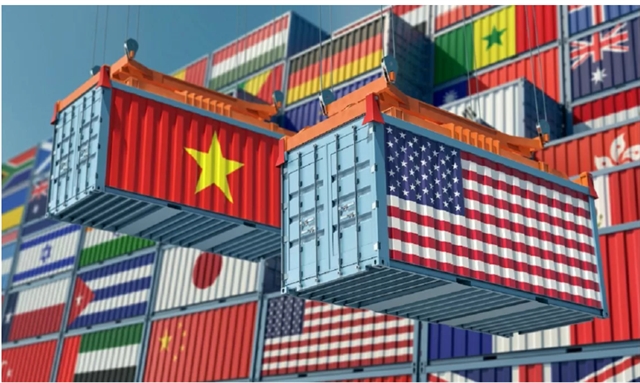As trade policies from the US grow increasingly complex, Vietnamese exporters are being urged to strengthen their logistics capabilities and compliance procedures to maintain access to the country’s largest export market.

HCM CITY — As trade policies from the US grow increasingly complex, Vietnamese exporters are being urged to strengthen their logistics capabilities and compliance procedures to maintain access to the country’s largest export market.
On June 18 the Investment and Trade Promotion Centre of HCM City, Super Cargo Service Co., Ltd. and Cargotrans USA held a training conference on “Logistics solutions for export-import enterprises facing US tariffs – Challenges and opportunities”.
Opening the event, Hồ Thị Quyên, deputy director of ITPC, said Việt Nam’s economy was showing encouraging signs of recovery, particularly in export activities.
According to the General Statistics Office, in the first five months of 2025 exports topped US$180.23 billion, a 14 per cent increase year-on-year.
The US remains Việt Nam’s largest trading partner with bilateral trade reaching $57.2 billion in the first five months of 2025 and Việt Nam recording a surplus of $49.9 billion.
Logistics play a key role in supporting economic growth by facilitating goods movement and supply chain management. According to the Vietnam Logistics Business Association, the industry has been growing at 14–16 per cent annually and is worth around $40–42 billion a year.
But the global network is under strain due to shifting supply chains and increasing trade barriers.
Ports on the US west coast like Los Angeles saw a 9 per cent decline in container volume in May 2025 compared to a year earlier.
Freight rates have surged as a result. Sea freight to the US West Coast has increased from VNĐ46 million ($1,850) per container to VNĐ73.5 million ($2,950).
Rates to the East Coast have more than doubled, from over VNĐ50 million ($2,000) to nearly VNĐ123 million ($5,000).
The US’s tariff mechanisms like Sections 301, 122 and 338 add layers of complexity for exporters.
In response, US importers are diversifying supply sources and making greater use of bonded warehouses and foreign trade zones to reduce their tax liability.
Customs brokers are evolving from simple declaration agents to strategic trade compliance consultants.
For Vietnamese exporters, the key challenge lies in demonstrating the substantial transformation of goods to prove origin, particularly if Chinese inputs are involved.
Under US law, mere assembly or final-stage packaging is insufficient, and exporters must be able to provide detailed bills of materials, supplier declarations and audit-ready documentation.
US customs uses artificial intelligence to scrutinise import records and has the authority to conduct retroactive audits up to five years after clearance.
Even when shipments have passed through customs, it could reclassify or reassess duties over the next 314 days.
Strategic recommendations for Vietnamese firms
Nguyễn Trần Khánh Hoàng of Super Cargo Service Group spoke about practical challenges faced by Vietnamese firms, notably high logistics costs, risks in documentation, and stricter enforcement of trade regulations.
He said businesses must invest in strong Standard Operating Procedures and train their staff to navigate regulatory risks.
Other strategies, such as Incoterm audits and Duty Drawback services, were also highlighted as tools to optimise supply chain finances and improve compliance outcomes.
The ITPC said the conference aimed to equip businesses with practical solutions in the face of rising tariff barriers.
As global supply chains continue to shift, Vietnamese exporters have the opportunity to step into new markets, but only if they meet the rising expectations in transparency, traceability and operational integrity.
By investing in robust logistics systems and understanding the nuances of US customs policy, Việt Nam’s exporters can turn regulatory challenges into sustainable advantages. — VNS





